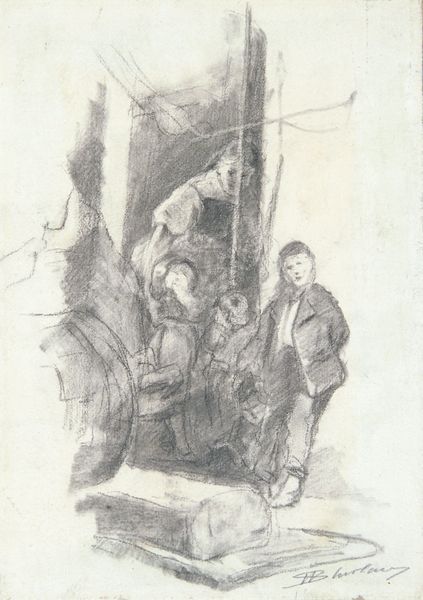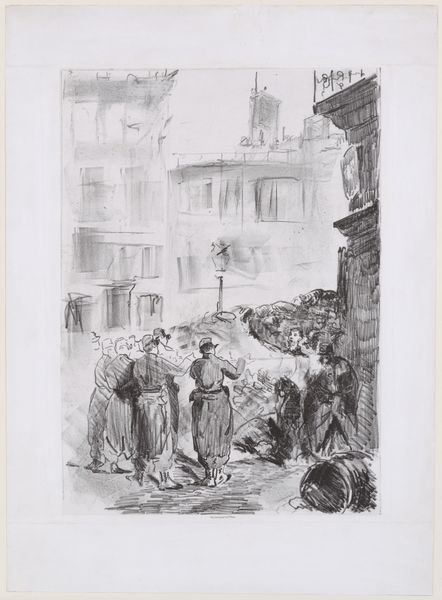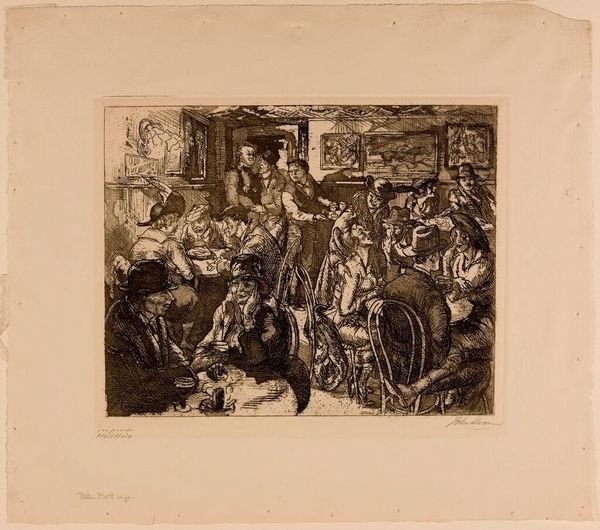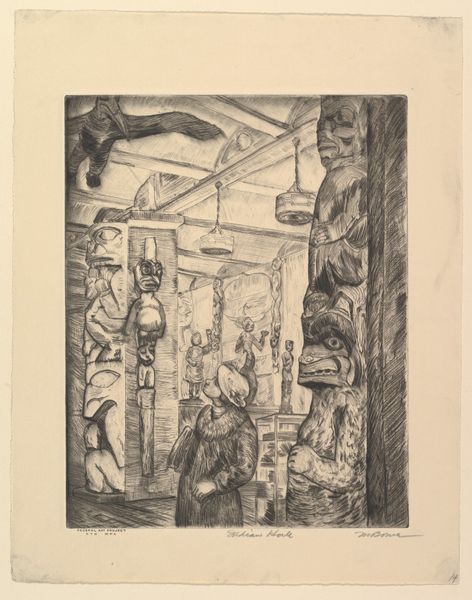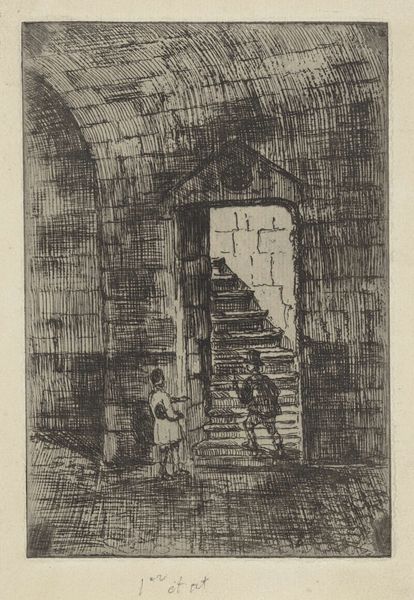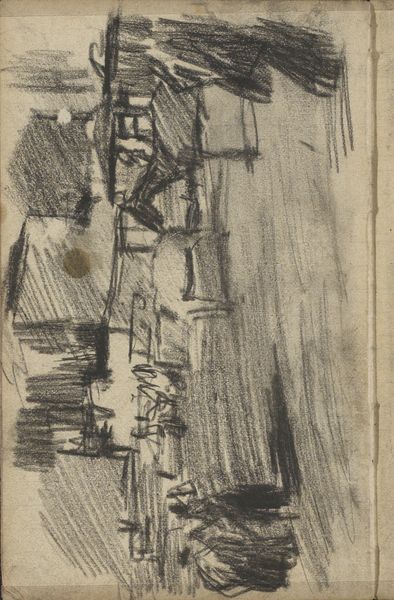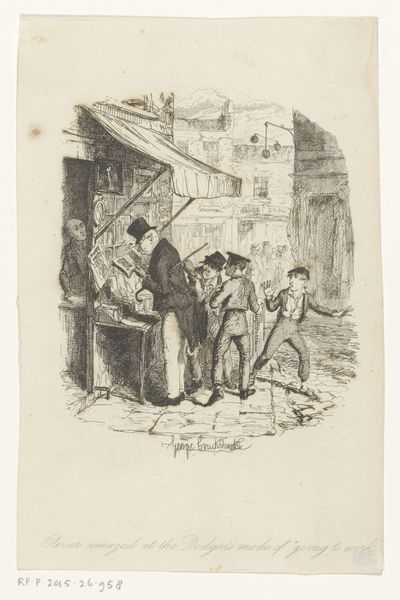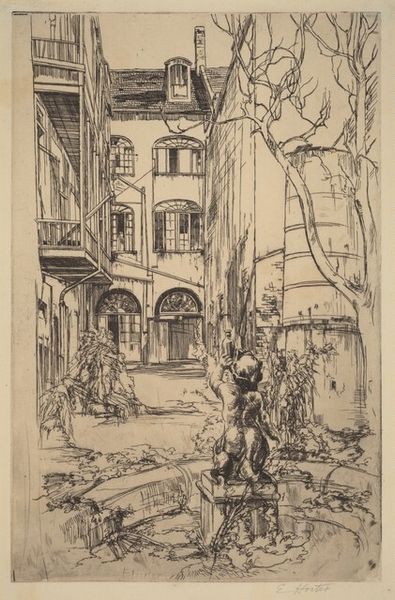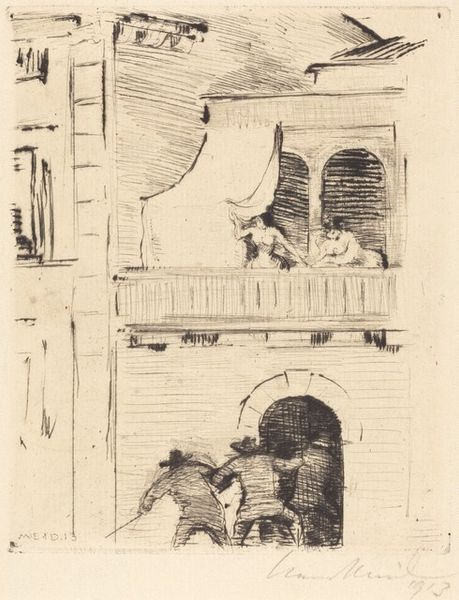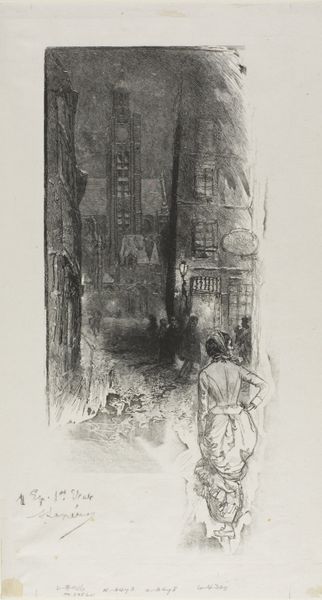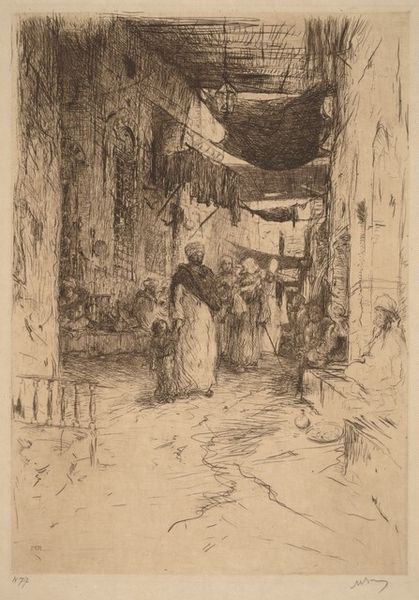
drawing, watercolor, pencil, pen
#
drawing
#
narrative-art
#
figuration
#
watercolor
#
pencil
#
pen
#
watercolour illustration
#
academic-art
Copyright: Public domain
Editor: Here we have Luc-Olivier Merson's "Projet d'illustration pour Macbeth-10," a drawing using pencil, pen, and watercolor. It feels preliminary, like a study. What stands out to me is the stark contrast between the detailed figures in the foreground and the more vaguely defined figures in the background. What do you see in this piece? Curator: Formally, it is the contrast that interests me most. The artist skillfully employs line and wash to create depth. Notice how the figures become increasingly less defined and detailed as they recede into the background. Merson uses this compositional strategy to direct the viewer's eye. Where do you think the focal point of the work lies, and how does Merson use light and shadow to achieve that? Editor: I think the focus is the meeting on the steps; maybe between Macbeth and Lady Macbeth? The darker shadows around the edges really do make the lighter figures in the middle pop. But what's interesting is the technique seems almost unfinished...why do you think that is? Curator: That "unfinished" quality underscores its inherent nature as a "projet," or study. The deliberate choice to leave portions less refined isn't a weakness. It highlights Merson's method: establishing the skeletal framework with pencil, reinforcing lines with pen, then adding atmospheric depth through delicate washes. Look at the cross-hatching and layering! How would you say this construction affects your reading of the piece? Editor: Seeing the layering of techniques really helps me understand how much planning and process goes into even what appears to be a simple sketch! Thanks for your insights. Curator: Indeed! Observing how artists construct their compositions opens a deeper understanding of visual language and intent.
Comments
No comments
Be the first to comment and join the conversation on the ultimate creative platform.
